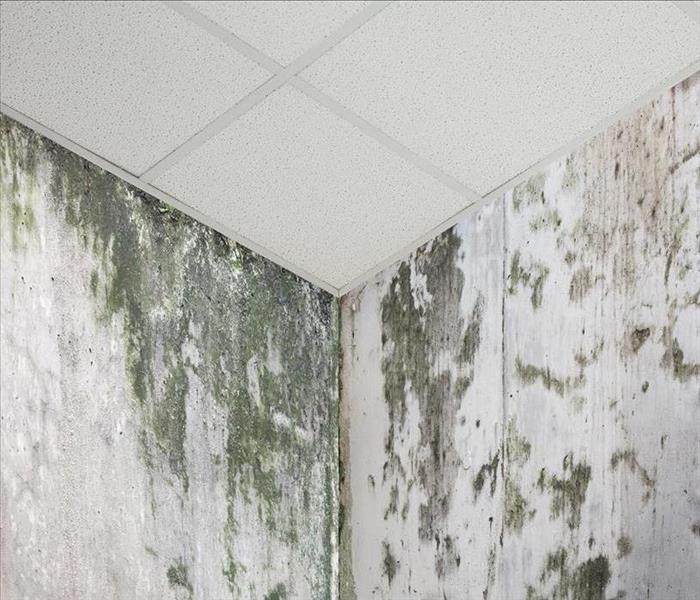How Do I Prevent Mold?
11/18/2021 (Permalink)
Mold can grow on many different surfaces, including in hidden areas, such as inside of walls, where it may be difficult to detect. It grows best in areas with ample moisture, such as property that has sustained water damage. You can't completely avoid mold, but there are steps you can take to reduce the chance of it growing to point that it becomes a problem.
How To Prevent Mold Growth
Mold needs moisture to grow. The most important part of mold prevention is controlling moisture.
1. Identify and Repair Moisture Problems
Identify any areas of your property that are prone to moisture accumulation or high humidity. Look for areas that tend to flood. Check windows for signs of condensation. Check roofs and ceilings for water stains or other signs of leaks. Remove wet materials, such as carpets and drywall.
Check for leaks in the plumbing and supply lines. Monitor the humidity levels in areas such as kitchens, bathrooms, or industrial equipment that produces steam. Have your HVAC system inspected for moisture problems. Make sure you change the air filters and check the drain pans regularly. Keep gutters free of debris and make sure they drain away from your property.
2. Quickly Dry Anything That Gets Wet
If your building has water damage from a burst pipe, sink overflow, or a weather event, dry out your property within 24 to 48 hours. Remove wet carpets, furniture, and other items that may be difficult to dry. Use pumps or a wet/dry vacuum to remove small to moderate amounts of water. Open doors and windows and run fans and dehumidifiers to help dry out your property. If you have substantial damage, consider contacting a water remediation company in Roanoke Rapids, NC, to assist you.
3. Check Your Ventilation
Areas with high moisture levels should be properly vented to discourage mold growth. Check the vents in your kitchens, bathrooms, shower rooms, laundry areas, and any other high moisture locations for problems. Run exhaust fans or open a window when moisture-producing activities are being performed.
4. Use Moisture Resistant Building Materials
Whenever you are building something new or repairing something old, choose moisture-resistant materials. Moisture-resistant drywall, sheetrock, and paint can help prevent mold from growing in the walls in high moisture areas. It is also less easily damaged by moisture and may need to be replaced less frequently.
5. Check Your Outdoor Drainage
Downspouts that aren't angled properly or parking lots and landscaped areas that aren't graded appropriately can cause water to accumulate around your property. This made lead to water seeping into your building. If you are noticing water pooling around your building when it rains, you may need to make adjustments to ensure that water is being directed away from your building, instead of towards it.
Water damage from flooding, leaky pipes, or storm damage can lead to mold problems if you don't dry your property out quickly. Moisture from everyday activities can also become a problem without proper monitoring and moisture control. Controlling moisture levels in your property is the key to preventing mold.




 24/7 Emergency Service
24/7 Emergency Service
